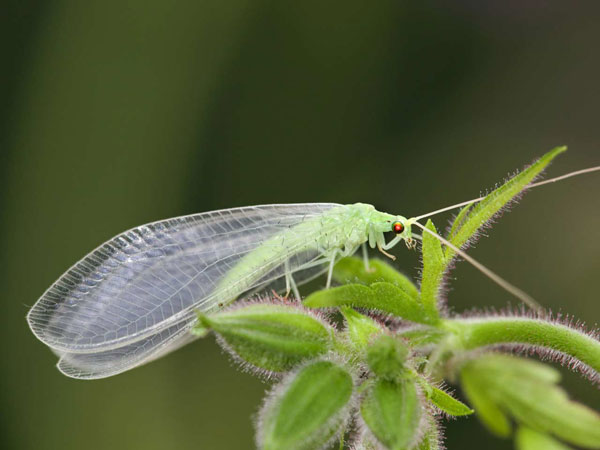Insect Predators (Chrysoperala zastrowi sillemi)

Chrysoperala zastrowi sillemi is a cosmopolitan predator found in a wide range of agricultural habitats. They are important for the management of bollworms and aphids in cotton and tobacco and several sucking pests in fruit crops. They are capable of bringing down the population of the pest drastically.
The biggest benefit of using Chrysoperala zastrowi sillemi for managing the jassids, aphids, mealy bug, white fly.
Morphology and Biology
- The eggs are stalked and green in colour. The length of the egg in various species ranges between 0.7 to 2.3 mm and that of the stalk between 2 to 26 mm.
- The eggs are laid singly or in clusters. Eggs turn pale whitish and then black before hatching. Egg period lasts 3-4 days.
- The larva is white in colour on hatching. The larva has 3 instars which are completed in 8-10 days. The larva spins a cocoon from which the adult emerges in 5-7 days.
- Adults on emergence mate repeatedly. Generally, pre-oviposition period lasts for 3-7 days.
- Adult females start laying eggs from 5th day onwards and peak egg-laying period is between 9-23 days after emergence.
- The male longevity is 30-35 days and female can even live up to 60 days. Fecundity is 600-800 eggs female-1.
- The sex ratio Male: Female is 1: 0.85. The adult males and females live 41 and 53 days respectively.
Doses of application
3000 to 4000 caterpillars or eggs/acre